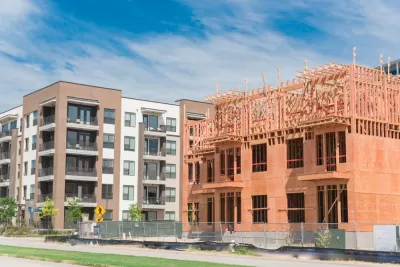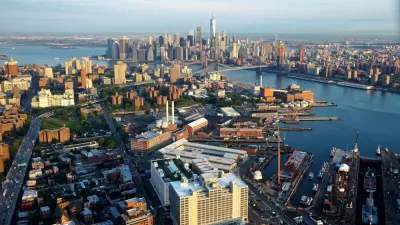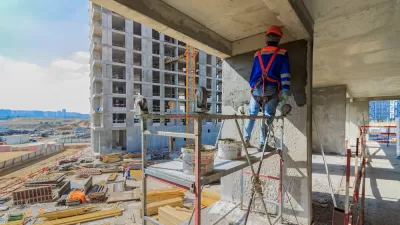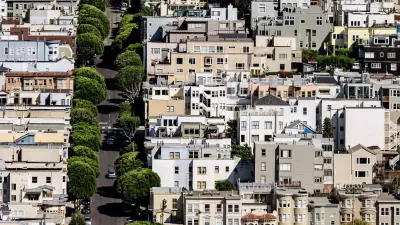A study that made the rounds as a working paper at the beginning of 2019 has now been published in a peer-reviewed journal.

A study years in the making has added a new reference in the debate about the effects of large new apartment developments on low-income neighborhoods located nearby.
The study, titled "Local Effects of Large New Apartment Buildings in Low-Income Areas," was published by The Review of Economics and Statistics on May 6, but the research first attracted attention it the beginning of 2019. Planetizen blogger Michael Lewyn introduced the research findings (in what was then a working paper) as potential ammunition for the YIMBY response to rising housing costs in large cities with restrictive zoning codes and low amounts of residential development.
Now published in a peer-reviewed journal, the research finalizes its findings, as summarized in the study's abstract: "New buildings decrease rents in nearby units by about 6 percent relative to units slightly farther away or near sites developed later, and they increase in-migration from lowincome [sic] areas."
The researchers argue that new apartment developments achieve price reductions in nearby neighborhoods by absorbing high-income households and increasing local housing stock. "If buildings improve nearby amenities, the effect is not large enough to increase rents. Amenity improvements could be limited because most buildings go into already-changing neighborhoods, or buildings could create disamenities such as congestion," reads the abstract.
For more of the latest on the subject, researchers at the University of California, Los Angeles recently published a survey of recent research on the consequences of new development for local housing markets.
FULL STORY: Local Effects of Large New Apartment Buildings in Low-Income Areas

Planetizen Federal Action Tracker
A weekly monitor of how Trump’s orders and actions are impacting planners and planning in America.

Congressman Proposes Bill to Rename DC Metro “Trump Train”
The Make Autorail Great Again Act would withhold federal funding to the system until the Washington Metropolitan Area Transit Authority (WMATA), rebrands as the Washington Metropolitan Authority for Greater Access (WMAGA).

DARTSpace Platform Streamlines Dallas TOD Application Process
The Dallas transit agency hopes a shorter permitting timeline will boost transit-oriented development around rail stations.

Supreme Court Ruling in Pipeline Case Guts Federal Environmental Law
The decision limits the scope of a federal law that mandates extensive environmental impact reviews of energy, infrastructure, and transportation projects.

Texas State Bills to Defund Dallas Transit Die
DART would have seen a 30% service cut, $230M annual losses had the bills survived.

Bikeshare for the Win: Team Pedals to London Cricket Match, Beats Rivals Stuck in Traffic
While their opponents sat in gridlock, England's national cricket team hopped Lime bikes, riding to a 3-0 victory.
Urban Design for Planners 1: Software Tools
This six-course series explores essential urban design concepts using open source software and equips planners with the tools they need to participate fully in the urban design process.
Planning for Universal Design
Learn the tools for implementing Universal Design in planning regulations.
Roanoke Valley-Alleghany Regional Commission
City of Mt Shasta
City of Camden Redevelopment Agency
City of Astoria
Transportation Research & Education Center (TREC) at Portland State University
US High Speed Rail Association
City of Camden Redevelopment Agency
Municipality of Princeton (NJ)





























